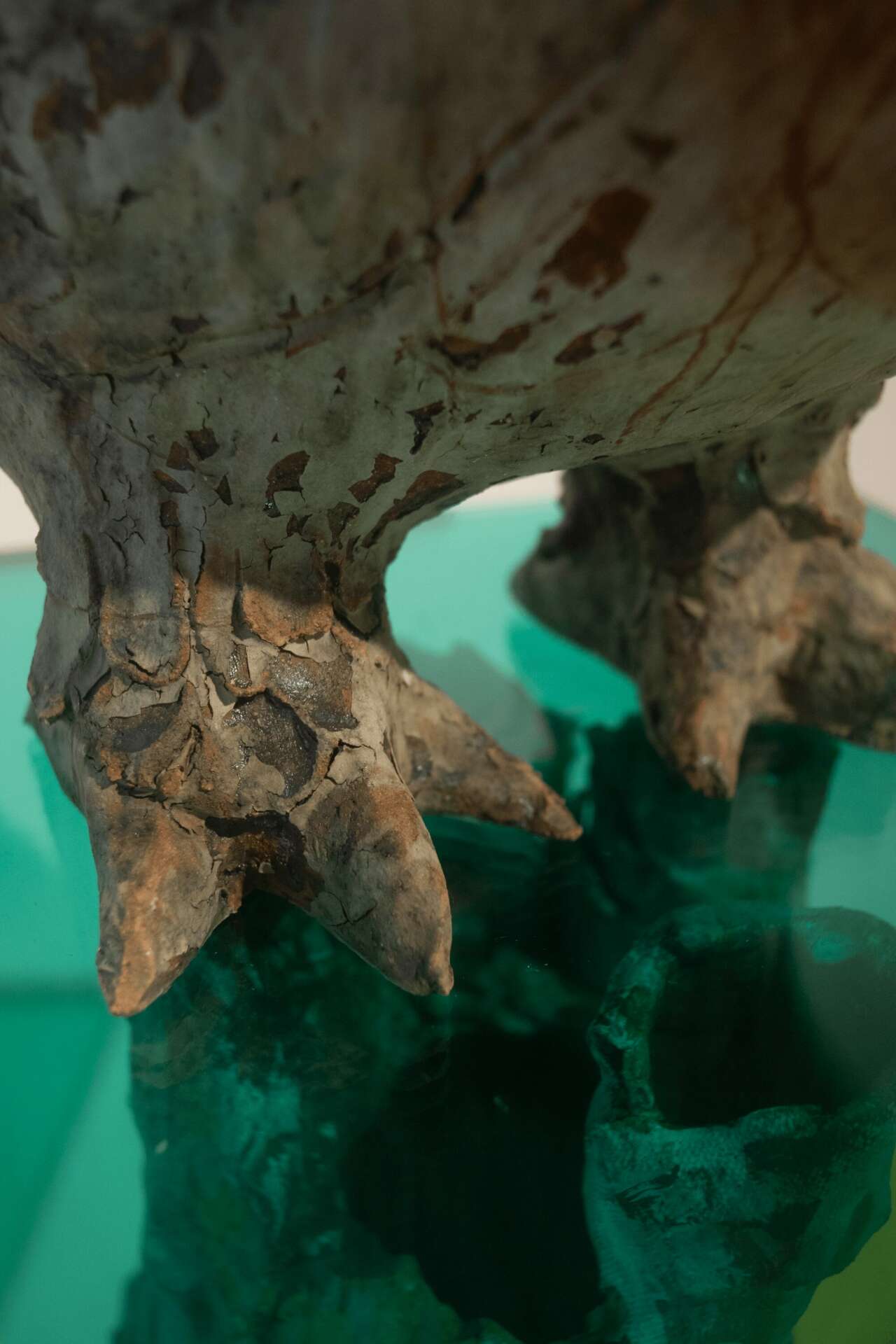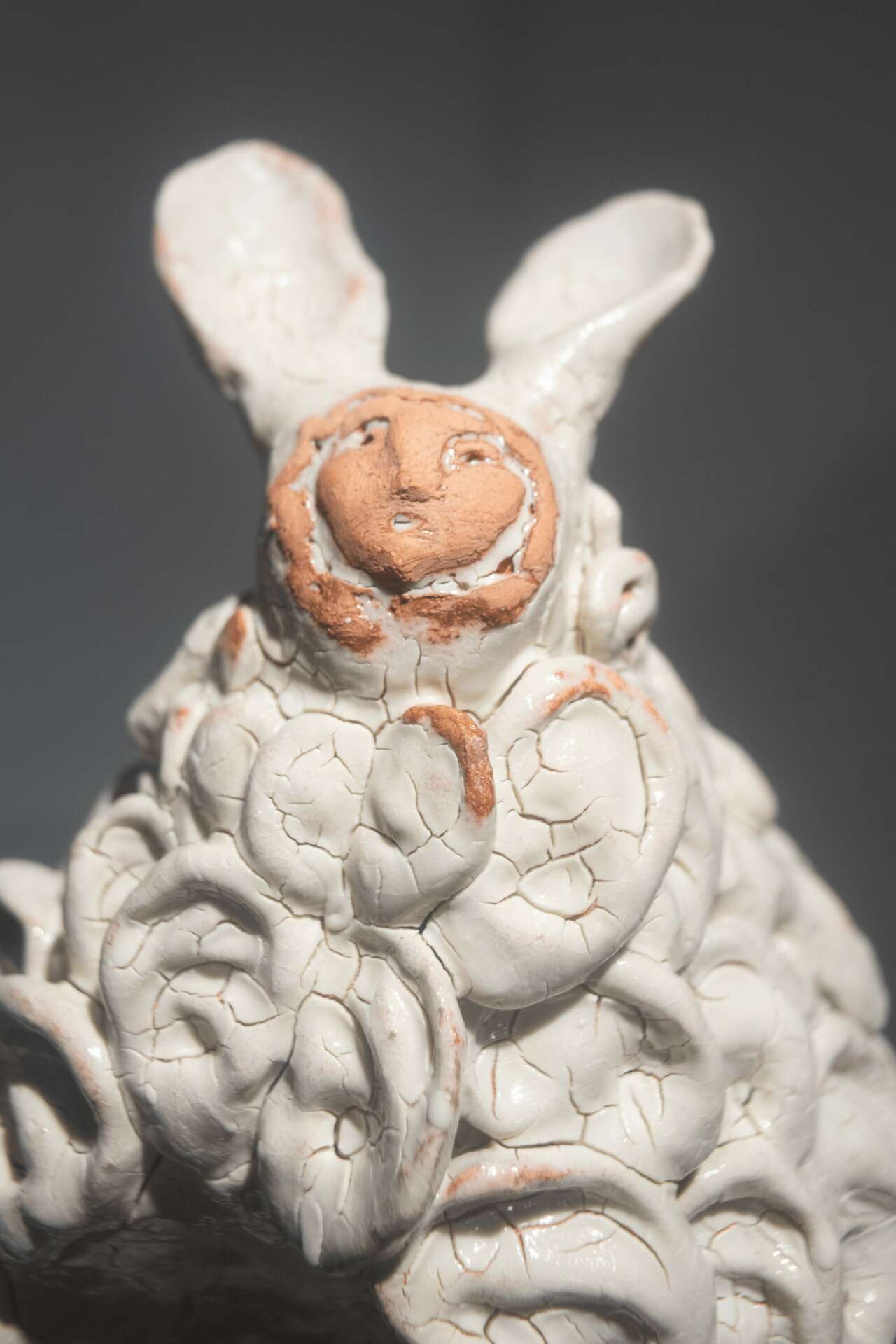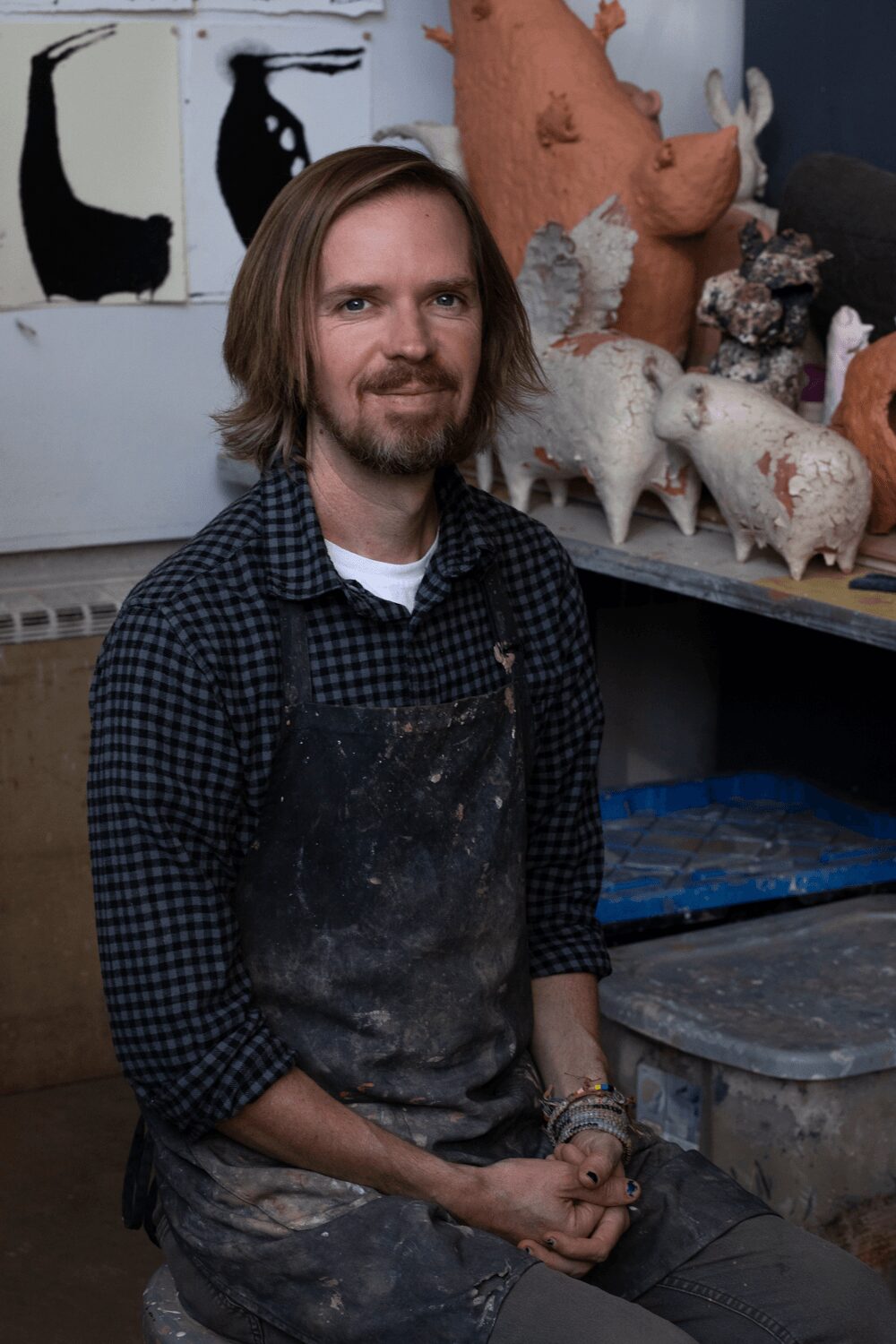We’re excited to introduce you to the always interesting and insightful Christopher St. John. We hope you’ll enjoy our conversation with Christopher below.
Alright, Christopher thanks for taking the time to share your stories and insights with us today. Can you talk to us about how you learned to do what you do?
My skill in ceramics comes from a long-developed practice in drawing. Although it might be strange to attribute an understanding of the problems of three-dimensional form in clay to ink drawing, I really believe that line helped lay a strong foundation for my personal expression in clay. I “draw” with clay, which is to say, I work the material to preserve the mark. As a hand-builder, because I learned how to create drawings that are fresh, lively, responsive, and not overworked, I understood that clay as a material also requires an approach that is fresh and responsive to give this heavy material as much of a sense of lightness and life in the material as possible. Clay, at its worst, looks like a lump of beaten-up rock when overworked. All the ceramic work I was familiar with, mostly from Indigenous peoples of the Americas, had this ease and facility that I associated with drawing. Formally, I initially learned my craft from the teachings of Paulus Berensohn, a former professional dancer who fell in love with clay. In his book, Finding Ones Way With Clay, he begins with the pinch pot and the slow way of working that pinching and shaping require. This approach really resonated with me, because every mark and movement positions me in space as a maker to the next moment in the process. It was in this way that I began to understand the ceramics process, and learning to suspend judgement and let the material speak in relationship with myself as the maker.
The initial obstacles in learning clay have everything to do with moisture. Letting things dry slowly to avoid cracks, learning how to attach parts with the same level of moisture content so that they stick together, learning the flaws in my making process that would catch airpockets and this cause explosions in the kiln…all of this took patience and time to learn, and having the facilities and equipment to do this and expand the work into other approaches ( different firing methods) took some time as well.

As always, we appreciate you sharing your insights and we’ve got a few more questions for you, but before we get to all of that can you take a minute to introduce yourself and give our readers some of your back background and context?
I am a ceramic artist, and my work is focused on animals. I see clay as a material that can foster empathy with audiences, and I hope in small ways these animals create moments of connection and care. I think people see themselves in my work, from the rabbits to the bulls, and i think they see something that is quiet and still and whole unto itself. This is a relationship I would like to see modeled in the way people connect with other life on this planet. The climate crisis and the extinction event we are living through require many voices and collective action to repair the damage that our species has done to this planet. I believe a small way of doing that is through art, and using art to create models for empathetic connection. We need more peace, and patience with the world, and understanding, because the climate systems are dynamic and the changes we are seeing and experiencing are the result of generations, not single individuals. Animals and other lifeforms are seen as beings without designation of personhood, and I make art that pushes against that notion, even if in a small way.

What do you find most rewarding about being a creative?
The most rewarding aspect of being an artist is the knowledge that I am free, living freely, and creating a life as I see fit and as I am called to do. I can choose to do things differently, create it differently as the idea requires, and although it is affirming to have audiences aligned with what I do, it is not a requirement. Most people seem uncomfortable when I bring up the subject of mass extinction in my work, but I don’t let that stop me from saying what I think the work needs to say.

Do you think there is something that non-creatives might struggle to understand about your journey as a creative? Maybe you can shed some light?
I was sharing with someone about a project I am currently working on with a composer living in Buenos Aries, and she asked, “Oh, is this a passion project?”
At first, I was a little confused, and I remember thinking, no this is art, and I am an artist. It is part of my practice. I believe artists have the misfortune of having to justify their work to people who don’t really conceive of it as having an important place, or even the idea of a practice, in the way that doctors or plumbers have a practice, one that requires investment of time, practice, professional development, education, networking, etc. I think too much of the idea of being an artist centers around recognition and success, and simply saying “I am an artist”, isn’t enough for most people. Institutional support doesn’t make an artist. CHOICE makes the artist. I admire the recent work of Isabelle Brourman, one of the courtroom artists for the recent Trump trial. No one told her that she could do this thing. She decided it for herself, showed up, did the work. That’s what makes an artist. You show up and do the creative work, you figure it out, and you don’t wait for other people to decide what you are.
Contact Info:
- Website: https://www.christopherstjohn.art
- Instagram: https://christopherst.john
- Youtube: https://www.youtube.com/channel/UCcxUhLbTYTcAHJeTZqUYOxQ
- Other: https://christopherstjohn.substack.com


Image Credits
photo credits Isabelle Huelsmann photography


